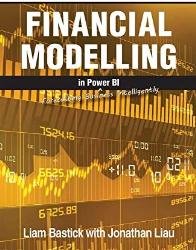 Название: Financial Modelling in Power BI: Forecasting Business Intelligently
Название: Financial Modelling in Power BI: Forecasting Business IntelligentlyАвтор: Jonathan Liau, Liam Bastick
Издательство: SumProduct Pty Limited
Год: 2022
Страниц: 354
Язык: английский
Формат: pdf (true), epub
Размер: 50.9 MB
Just like a shovel, this book is genuinely ground-breaking. It hits you over the head with the proverbial gardening tool, implementing the way forward for financial modelling. Many working in banking and finance create their financial models in Excel and then import them into Power BI for graphical interpretation and further analysis. Not on our watch. We're going to jettison the universal spreadsheet and build the entire model in Power BI. We can't stress how far off the range we're taking the horses. If you are reading this, you are a true pioneer. Some have managed to build the odd financial statement in Power BI, but all three? This is where you can gain a major advantage in the workplace. If you build the calculations for financial statements in Power BI, you can produce statements by product, by customer, by geography... Get the picture? The limitation will be restricted to the granularity of the underlying data and your imagination.This book unearths some of the tricks, measures, logic and tools needed to build the model (there is no need to bury your mistakes). We just can't promise you a rose garden...With the usual jokes in spades, it's just a shame we couldn't get Doug (get it?) to assist.
You may or may not be familiar with the first two books in this series, Introduction to Financial Modelling and Continuing Financial Modelling. These weighty tomes covered how to model in Excel. But time moves on. And more and more of us are realising that whilst the humble spreadsheet is a powerful enabler, there’s a young upstart in town, gaining traction every day. Power BI – Microsoft’s self-service business intelligence and data visualisation tool – is becoming both more versatile and more popular each month. Today’s analysts need to use the best, most powerful and flexible analytical software for their work. More and more of us are realising Power BI fits the bill. We’d be foolish to stand still.
This is NOT a "basic" book on Power BI. If you know nothing about Power BI, you might be able to follow the gist here, but I would strongly advise reading an introductory text first. All functions used here will be explained, but not in copious detail, as and when they are needed (almost as "asides"). Knowing your way around Power BI is "assumed knowledge". Having said that, most of the formulae used do not require a PhD in Mathematics either. As always with these books, the devil is in the concept, not the detail.
The plan for this book is as follows:
• Power BI introduction: Just in case you have been living under a rock for the past millennium, I provide a brief overview of Power BI
• Discussion on "Best Practice" methodology: To be honest, just getting the model to work in Power BI may seem a sufficient challenge, but here I remind what constitutes "Best Practice" financial modelling at a high-level. This will help keep these principles front and centre when developing our model
• Financial statements theory: I tell this joke every time, but it’s no secret that it was the phrases "double entry" and "working with models" that attracted me to this profession. How disappointed was I? On a serious note though, I want to revisit the key outputs of a financial model to fully understand what "three-way integrated" means and the ramifications for the modeller. Further, I actually go back to understand what is an Income Statement, a Balance Sheet and a Cash Flow Statement. Yes, you may know what they are – but I want to do it from the perspective of understanding the purpose of each statement so that it guides you in determining the order of building a financial model. No matter what you build, the derived order may be applied to all future model developments
• Control accounts: Just like the Excel version of this topic, it all revolves around control accounts, i.e. analysing what causes movements in Balance Sheet items. Using this very simple approach – adopted throughout this book – you will find Balance Sheet errors will become a thing of the past
• Getting started in Power BI: This section doesn’t deal with installation points (that was earlier, see above); this section is more about tips on setting up the data, so that loading and calculation times are not unnecessarily long, as well as considering parameterisation for scenario and sensitivity analyses at the outset. These are key considerations if working with voluminous data
• Example of a model build: Oh yes, it might be an idea to actually build up a case study, and this constitutes the main body of this text. The approach will be methodical and discuss the order of calculations and alternative methods available at times. Formulae will chiefly be built in DAX, rather than M, for reasons that will become clear later in the book.
As always, let me stress one last thing: this book is a practical book. There are lots of supporting examples to play with and use, to visualise the important concepts discussed here. The aim is to understand the concepts, not the specifics, because you will never build this case study again in your life – but you will want to apply the lessons learned to your own scenarios.
Скачать Financial Modelling in Power BI: Forecasting Business Intelligently